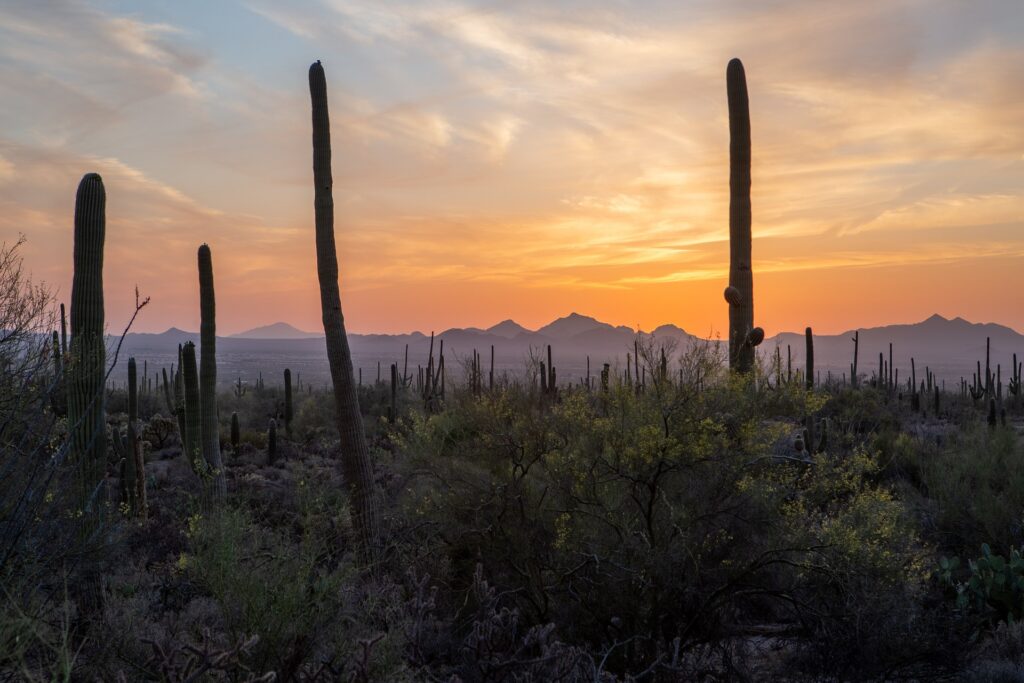here are 12 movies filmed in Tucson, Arizona, with release date, along with their stars and filming locations:
- “Rio Bravo” (1959)
– Starring John Wayne, Dean Martin, and Ricky Nelson, this Western classic was partly filmed in Tucson.
The production used Old Tucson Studios and the Arizona-Sonora Desert Museum as locations. - “McLintock!” (1963)
– Starring John Wayne and Maureen O’Hara, this comedy-Western was filmed in and around Tucson, including Old Tucson Studios and San Xavier Mission. - “Alice Doesn’t Live Here Anymore” (1974)
– Starring Ellen Burstyn, Kris Kristofferson, and Diane Ladd, this drama follows a recently widowed woman who moves with her young son to Tucson.
The film was primarily shot on location in Tucson, including scenes at the Tucson International Airport and the Pioneer Hotel. - “The Getaway” (1972)
– Starring Steve McQueen and Ali MacGraw, this action-thriller was partially filmed in Tucson, including a car chase through the streets of downtown and scenes at the Tucson International Airport. - “Pocket Money” (1972)
– Starring Paul Newman and Lee Marvin, this comedy-drama was filmed in and around Tucson, including Old Tucson Studios and the town of Benson. - “The Life and Times of Judge Roy Bean” (1972)
– Starring Paul Newman, this Western was partially filmed in Tucson, including scenes at Old Tucson Studios. - “Junior Bonner” (1972)
– Starring Steve McQueen, this drama follows a rodeo rider who returns to his hometown of Prescott, but some of the film was shot in Tucson, including scenes at Old Tucson Studios. - “Tommy” (1975)
– Starring Roger Daltrey, Ann-Margret, and Elton John, this rock musical was partially filmed in Tucson, including scenes at Old Tucson Studios. - “The Gauntlet” (1977)
– Starring Clint Eastwood and Sondra Locke, this action-thriller was filmed primarily in Tucson, including a climactic chase scene through the streets of downtown. - “The Quick and the Dead” (1987)
– Starring Sam Elliott and Kate Capshaw, this Western was filmed in and around Tucson, including scenes at Old Tucson Studios and the Pima Air and Space Museum. - “Tombstone” (1993)
– Starring Kurt Russell, Val Kilmer, Sam Elliott, and Bill Paxton, this Western film is set in Tombstone, Arizona, but much of it was actually filmed in and around Tucson.
Some of the filming locations included Old Tucson Studios, San Rafael Ranch State Park, and the Pima County Courthouse. - “The Three Burials of Melquiades Estrada” (2005)
– Starring Tommy Lee Jones, Barry Pepper, and Julio Cedillo, this drama was filmed in and around the town of Bisbee, located about 90 miles southeast of Tucson. Some of the filming locations included the Mule Mountains, the San Pedro River, and the Lowell Neighborhood.
